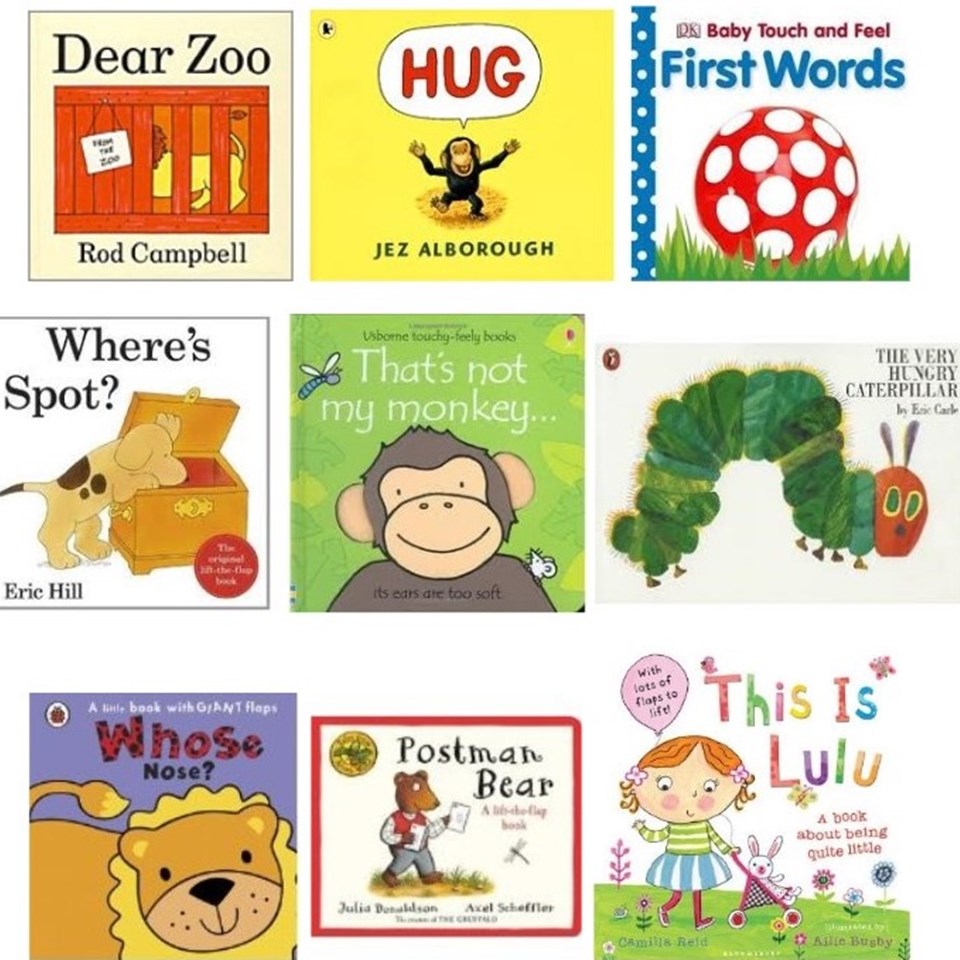Reading with your child

Reading a book with your child every day can significantly add to their speech and language development.
Reading with your younger child
Books with flaps, touchy feely pages and bright colours can help keep the attention of a young child. Simple books with few words can allow you and your child to talk about what you see. Remember to ‘model’ language to your child as you read together and ‘add language’ where appropriate.
See the image for some suggestions of appropriate books to read with 2 year olds!
Here are some tips on how to make the most of reading with your infant:
- Model the language: When your child says a word, copy it and praise their attempt, eg, if they say "at" say "yes, well done, it's a cat".
- Follow your child's lead: Look at books about things that interest them. If they point to objects in the book, label them and talk about them.
- Simplify: If a book is a bit too complicated, Simplify it. You don't need to say all the words that are written down. Once you've got their attention for the simplified story, try reading the whole story.
- Fill in the blanks: Get your child to fill in the blanks of a story they know eg adult says "they sent me a..." and point to the picture, child says "lion", adult says "but it was too..." child says "scary!" (From Dear Zoo).
- Match +1: Match your child's language and add one word to the end, eg child says "cat" you could say "black cat".
- Quiet: Turn off any background noise TV, music etc and choose a distraction free area to read.
- Taking it further: Go on a hunt for objects around the house that you've read about, eg a toy lion after reading Dear Zoo. Check out Sparklebox.co.uk for free printable resources
- Fun: Don't forget to make it fun! Use lots of intonation and expression in your voice to keep your child interested.
Reading with your school-aged child
Try some of these ideas to help develop your school-aged child's speech and language skills when reading together:
- To help keep their attention and make things fun, change the main character’s name to their name eg Hairy Maclary becomes “Daniel Maclary”
- Let your child be ‘the teacher’ and read you the story. You can then put your hand up and ask ‘wh’ questions about it (‘who’, ‘what’, ‘where’, ‘when’, ‘why’) to ensure they have understood what they have read. If they don’t know the answer, explain and show it to them.
- If a ‘challenging’ word appears in a story when you’re reading, try to act it out together to help them understand what it means and make it more enjoyable. They're more likely to remember it next time.
- Ask ‘what if’ questions at the end of the story to develop their imagination.
- Develop turn taking by taking turns to read, describe a picture or turn the page.
- To focus their listening give them a particular word to listen for. When they hear it they can put their hand up or clap.
- At the end of a story, encourage your child to relate the message of the book to their life eg for older children: "what does it mean to be a good friend?" "how are you a good friend to your friends?". For younger children: "rabbit was a good friend because he was kind and cared about his friends. You are kind and care about your friends just like rabbit".
- Encourage your child to talk about the pictures to develop their spoken language. You could make up a new story just using the pictures.
- Using different voices and revealing the characters’ emotions while acting out the story can also help children to relate to the story more effectively. It will also help to develop their understanding of emotions.
- Encourage your child to verbally participate in story time by them saying the repetitive line in the story together with you eg "Not now Bernard!"
- Find words containing speech sounds your child is practising. Practice saying the sound together. See how many times you can find it on a page. Play ‘I-spy’ with the pictures. If your child has difficulty producing the sound you can model it for them instead. Let them see what you are doing with their mouth.
Check out our Speech and language advice pages for more help with your child's communication. If you need further support, you can find information on how to contact our Speech and Language Therapy team here.